Monthly Archives: April 2013
Mexico feels like Home
The first week in San Carlos flew by in a sort of blur. This place is full of memories for me, even with the obvious changes. I had driven down numerous times in my camper van, and also arrived north through the Sea of Cortez at the end of a long sailing trip. Years ago I even took the overnight bus from here all the way to San Diego. I was comfortable at my campsite and every day was busy, exploring the city, wandering on the beach, meeting new friends, and trying hard to find my old friend Healy’s house.

my friend Healy Burnham
But… finally I found it!
Healy was a retired veterinarian from Iowa, and reportedly he was the first gringo who bought and lived in the “Ranchitos” area, where he stayed for decades, until his health failed. I visited him in San Carlos over several years in the 90s, and miss him dearly since he died almost 20 years ago. He even kept all my boxes of gear for a year after I finished the sailing life and left the boat on the hard there in 1993. I traveled so often in my van to visit that he even built me a bath house out in the yard so I could have running water while I was camping. Everything has changed so much since that it took me a long time but I finally found his house, which is still owned by his son but is infrequently visited. So many great memories here!
I was pleasantly surprised several times on this trip when I met people who remember him as a sort of legend, and it was great fun to hear their old stories. All the local people used to bring their injured animals for him to heal, countless dogs and cats to spay and neuter, and usually brought him chickens, coffee, oranges or whatever they had in appreciation. One woman told me how he drove her and all the other children to Guyamas each morning so they could attend school because there was no school in the village,and no bus, and nobody else had a vehicle to take them. Another man told me that Healy was a member of the famous Merrill’s Marauders, the special ops jungle warfare unit in Indochina during World War II. They used hundreds of mules, and Healy was the veterinarian assigned to them. It was truly an honor to be his friend. In fact, I have been blessed with incredible friends throughout my life, dearly beloved people who are my true family. I can’t believe how I continue to miss those who are now gone.


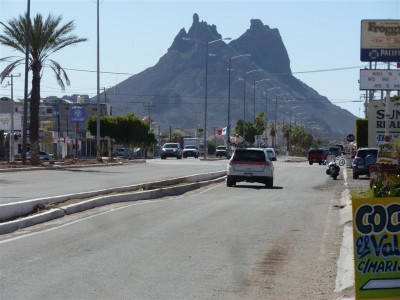
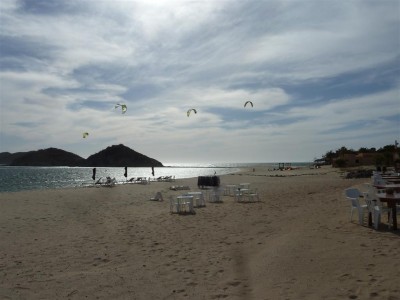
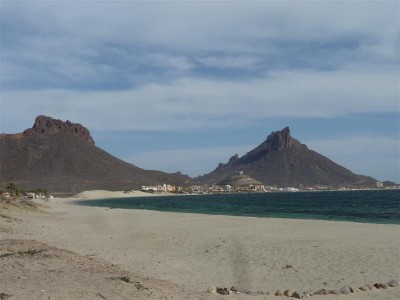
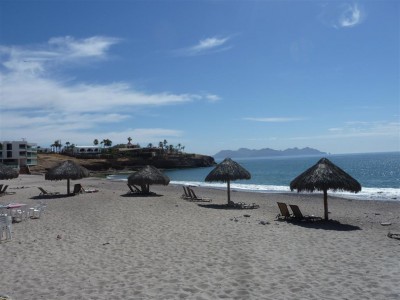
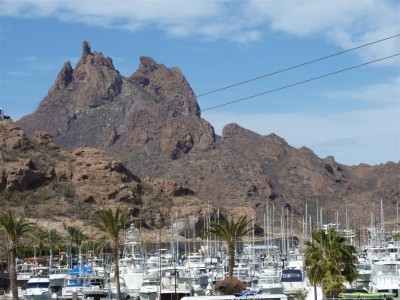
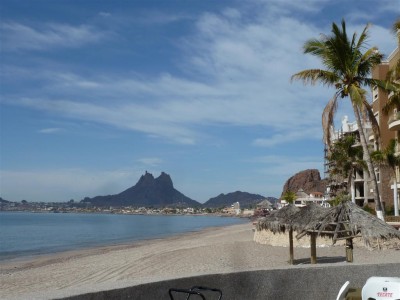

When you are in San Carlos, the fear of Americans to travel in Mexico seems foolish. It is full of Americans and Canadians, many of whom have homes and live here year-round. It’s easy to see why. The Rotary Club meetings are even in English, and I was very impressed with all the work they do throughout the area. This country has always felt like home to me, and I want to spend more time here in the future.
Here is my camp at the RV Park. It was convenient but too much like a trailer court for me, and too busy when the huge motor homes started arriving from the south, on their way home to the U.S. and Canada. I enjoyed making friends with special people here, and discovering places to wander, eat, shop, and just relax.
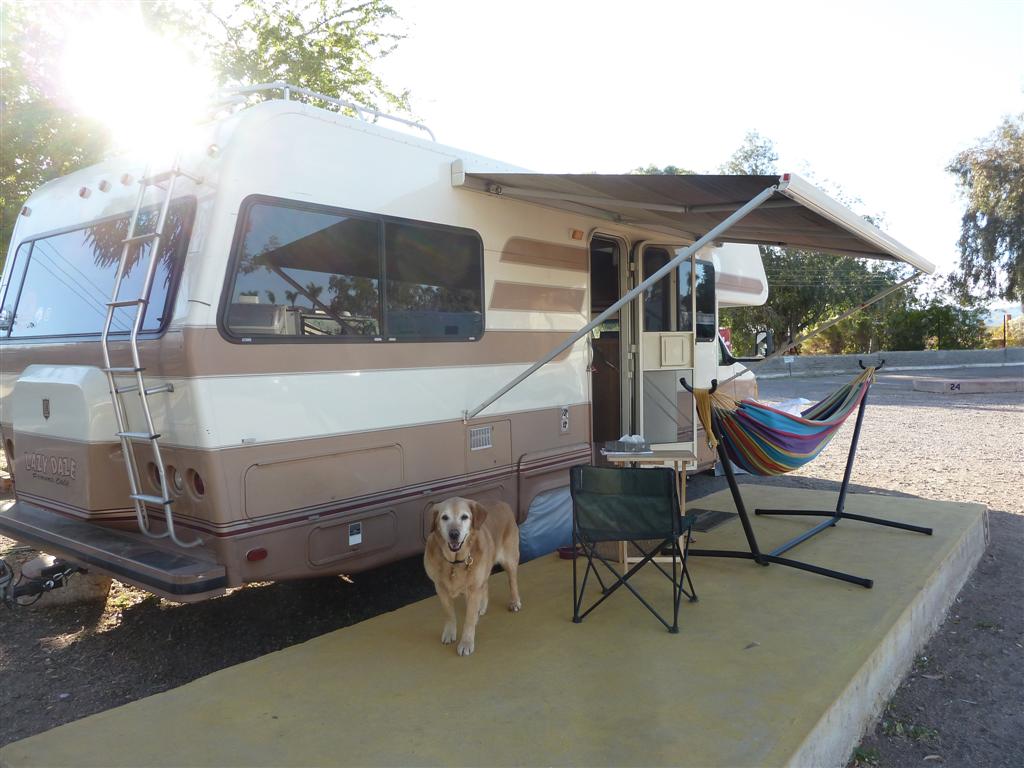
Cheyenne seems perfectly suited to the traveling life. I’m so glad that I brought her with me, and that she is older and happy just to be with me. Each morning we take a walk together, and I’ve gotten accustomed to collecting dog poop just as she’s adjusted her body functions to my convenience. This is a good life for us. Every day I think of the snow in Alaska, the dark and the isolation, and I’ve been glad not to be there. Gradually that big house and the family history that ties me there becomes less important. My goal is to let it go completely. I suppose part of this is because I can feel myself getting older and my time is limited. I have to think hard about how to live out my years and what is really important. I know that I have to let go of the lifelong habit of mothering, of responsibility for others, and of the underlying guilt that I was raised with and absorbed so successfully.
Flash to the Past –

Kristin on sailboat Antares, 1992.
Mexico here I come
I decided to copy from my journal about the drive into Mexico, since so many travelers are afraid to go and some have asked me about the trip.
After driving around the back of the Walmart in Douglas, as instructed by my friend at Cochise Supplies where I had bought propane, and up to the border, I stopped to talk with the USA border guards. They hadn’t actually made the trip themselves so weren’t much help. Fortunately on the Mexico side the Banjercito office was right there. Unfortunately there was no good place to park with a car in tow. They let me walk around to look at the parking lot, but the only possibility where I could fit would require me to back out, which I tried to explain I could not do. The border guards went all through the motor home, obviously they liked it a lot. Finally with the help of a ubiquitous Mexican wanting a tip, some cones were moved so I could park along the street ahead. The annoying little man kept trying to make me go with him while telling me that I should pay him for his help. Same old story, but in colleague with the border guards.
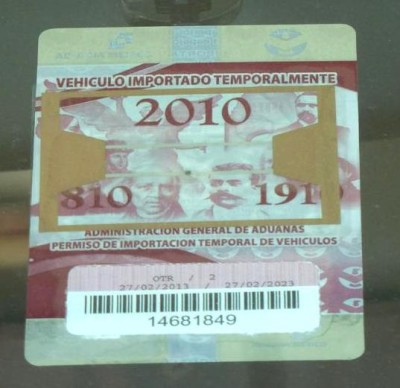 The guy at the office window was great, and fortunately I had arrived by 10 a.m., so the lines formed behind me. As always, I was impressed how patient local people are when they are used to bureaucracy and slow progress. Americans are very impatient, always. I had to go to one window to fill out the visa paperwork, then back to the office window to register my vehicles and pay $28 (295 pesos) for the tourist visa, good for six months. I’ll stay in the “free zone” which now includes San Carlos, but since I’m in a motor home and towing a car, I need more approvals. He confided in me that if I paid $49 in cash for the car (instead of using a credit card) then I wouldn’t have to pay the $200 deposit for it (seemingly not to sell it, although I don’t think I signed anything affirming that). To get some cash I had to go back to the motor home, dogged by my pesky helper. The other fees, for my own visa and the motor home could be paid by credit card. It was $50 for the motor home (695 pesos) but it would be good for TEN YEARS! The car and my visa permits were both good for six months. Not then nor on the return trip did anyone ever look at the health certificate and vaccination record for the dog, nor even on the flight from Alaska, but of course there would likely have been a problem if I didn’t have it.
The guy at the office window was great, and fortunately I had arrived by 10 a.m., so the lines formed behind me. As always, I was impressed how patient local people are when they are used to bureaucracy and slow progress. Americans are very impatient, always. I had to go to one window to fill out the visa paperwork, then back to the office window to register my vehicles and pay $28 (295 pesos) for the tourist visa, good for six months. I’ll stay in the “free zone” which now includes San Carlos, but since I’m in a motor home and towing a car, I need more approvals. He confided in me that if I paid $49 in cash for the car (instead of using a credit card) then I wouldn’t have to pay the $200 deposit for it (seemingly not to sell it, although I don’t think I signed anything affirming that). To get some cash I had to go back to the motor home, dogged by my pesky helper. The other fees, for my own visa and the motor home could be paid by credit card. It was $50 for the motor home (695 pesos) but it would be good for TEN YEARS! The car and my visa permits were both good for six months. Not then nor on the return trip did anyone ever look at the health certificate and vaccination record for the dog, nor even on the flight from Alaska, but of course there would likely have been a problem if I didn’t have it.
I was able to get out of Agua Pietra, the border town on the Mexican side, without having to back up or back track but there were few road signs. I found that the highway is in terrible shape, very rough and narrow, with no shoulders, but with hundreds of semis racing along in both directions. It goes through the mountains and undoubtedly there are few motor homes, if any. I hadn’t gone 20 miles before reaching the first big roadblock, at the turnoff to Naco, where there is another small border crossing. This roadblock was manned by dozens of police in camouflage with black face masks and carrying machine guns. Mostly they were searching all the semis, and waved me off to a detour to go around. A group of four came up to search the motor home, including a lovely young unmasked woman officer who really liked Cheyenne. (I’ll bet her mother wishes she had a different and safer job!) They were astonished that my motor home is a little “casa” and wanted their friends to come over and see it. Obviously they had never been in one before. It was very sweet and they all waved at me as I drove on.
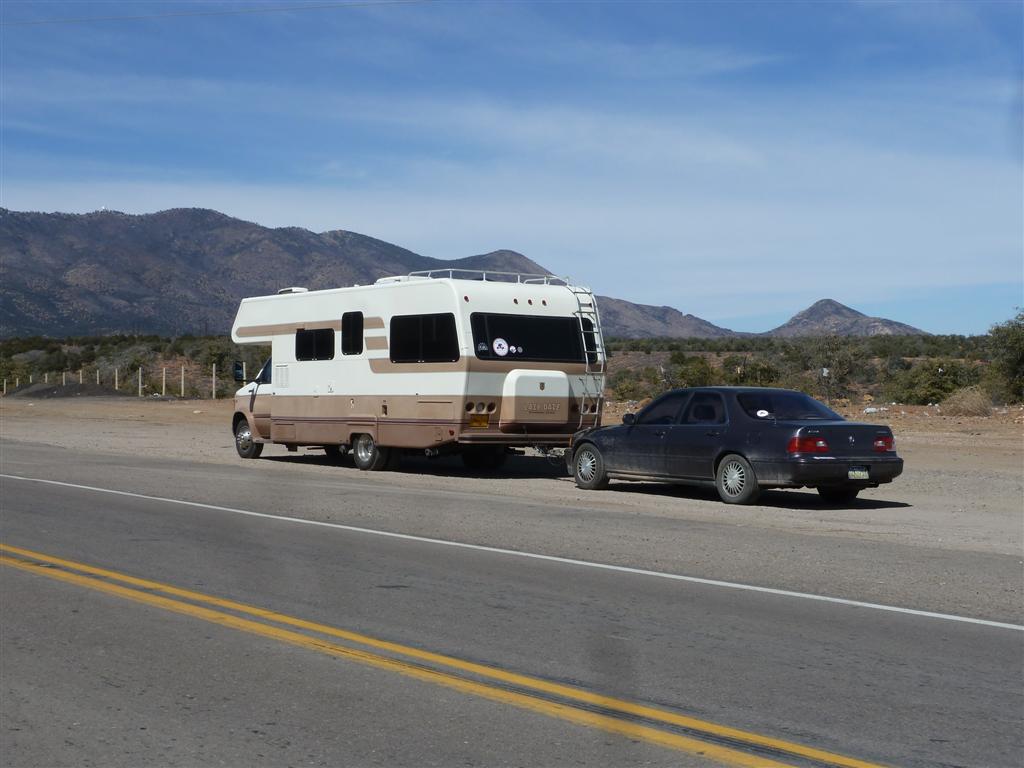
As the hours passed, I got almost used to having big fast semis going by me both ways, from ahead and from behind, on those skinny roads with barely enough room for us. The mountains were steep and the road conditions so bad that I usually was driving under 35 mph. I was stopped again after a couple of hours, and again it was no problem. The border patrol were very thorough going over my documents for the vehicles and an enthusiastic young man tossed around stuff searching my bedroom, but as I reached over to re-make the bed he apologized and tried to be more tidy about it. He was curious about everything, and was fascinated about the motor home, Alaska (mucho frio), and his colleagues joked about my inspector being hungry – so I offered some food in the refrigerator and everyone cracked up laughing. Again I got big waves and smiles when leaving. This is probably an advantage for a traveler using an un-touristed route.
At Imuris I rejoined the big toll road Highway 15 from Nogales. It had taken me three hours from the border, instead of less than one hour if I had driven on the usual route from Nogales on the toll road. But I’m glad I did it once, and there was no damage except for some bouncing around. At Magdalena I paid the first toll – 25 pesos for the car and 35 pesos for the cambion – bus – total $5. Near Carbo I was stopped in a long line of traffic, semis on the right and cars moving along on the left, so I followed them… only to find that they were driving down the steep bank into the ditch to bypass an accident ahead. I considered doing it too, but just felt it was too dangerous so I stopped in the road. A policeman came back to talk to me, he was the first person I saw all day who spoke English. He said he would stop the semis to let me in when the accident was removed to clear the lanes, which only took a few more minutes. Then there were many detours for freeway construction on the tollroad to Hermosillo. Again at Pesqueira there was a cuota – tollbooth – the cost was 175 pesos – 65 for the car, 110 for the motor home – $15.
By now I was getting very tired, hadn’t eaten all day and Cheyenne was thirsty, but there was no safe place to pull over. I had been driving for almost six hours by the time I reached Hermosillo, so I just pulled into the first RV park I saw. It cost $20 for one night, with services (only electric for me) and even some rather poor wifi internet. It was hot and very sunny, so I parked in the shade. Unfortunately the car was dead again, so a young man hammered out the cotter pins to the tow bars so I could back the motor home in, and then several guys pushed the car over so I could jump it. But upon opening the hood, the positive battery cable was completely off! Thanks to the macho man who installed the battery new in Quartzsite plus the bumpy road. After attaching it, the car started immediately. I took Cheyenne for a quick walk, ate some warmed up soup, and fell into bed. The highway noise was terrible, but I imagined it was ocean waves and slept just fine.
The next morning it was only about two hours to San Carlos, and the highway was kind of rough but no real problem. Hermosillo is a big city and the roads have minimal signage, so I was sure glad I didn’t push on the night before. Driving into San Carlos was a real shock after twenty years away. The highway approach is now eight lanes wide! The city is thoroughly Americanized, most everyone speaks English, and the prices are mostly in U.S. dollars!


I moved into the Totonaka RV Park and stayed there too long before learning that I could go camp by the estuary near the beach, where it was free and the few other campers were friendly and welcoming.